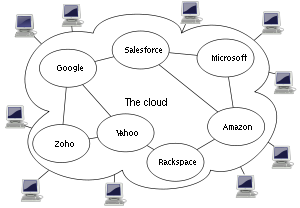Quote from Data and Computer Communication Book by William Stallings

Two (2) types of switching technique :
1. Datagram Approach
Each packet is treated independently, with no reference to packets that have gone before. Let us consider the implication of this approach. Suppose that station A has a three-packet message to send to E. It transmits the packet, 1-2-3, to node 4. Node 4 could possibly forward this packet to either node 5 or node 7 as the next step in the route. In this case, node 4 determines that is queue for node 7 is now shorter and so queues packet 3 for that node. So the packets, each with the same destination address, do not all follow the same route. As a result, it is possible that packet 3 will beat packet 2 to node 6. Thus, it is also possible that the packet will be delivered to E in a different sequence from the one in which they were sent. It is up to E to figure out how to reorder them. Also it is possible that packets to be destroyed in the network. From example, if a packet switching node crashes momentarilly, all of its queued packets may be lost. If this were to happen to one of the packets in our example, node 6 has no way of knowing that one of the packets in the sequence of packets has been lost. Again, it is up to E to detect the loss of the packet and figure out how to recover it
2. Virtual Circuit Approach
A preplaned route is established before any packets are sent. For example, suppose that A has one or more messages to sent to E. It first sends a special control packet, referred to as a Call-Request packet, to 4, requesting a logical connection to E.
Read more of this post


